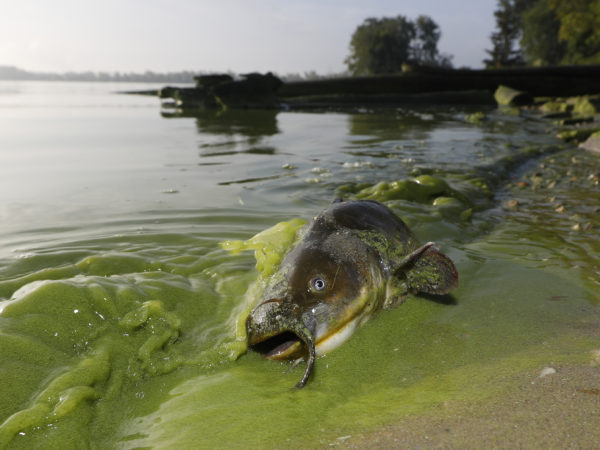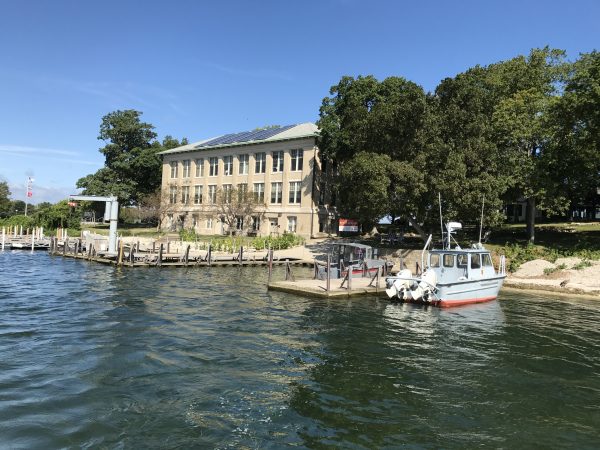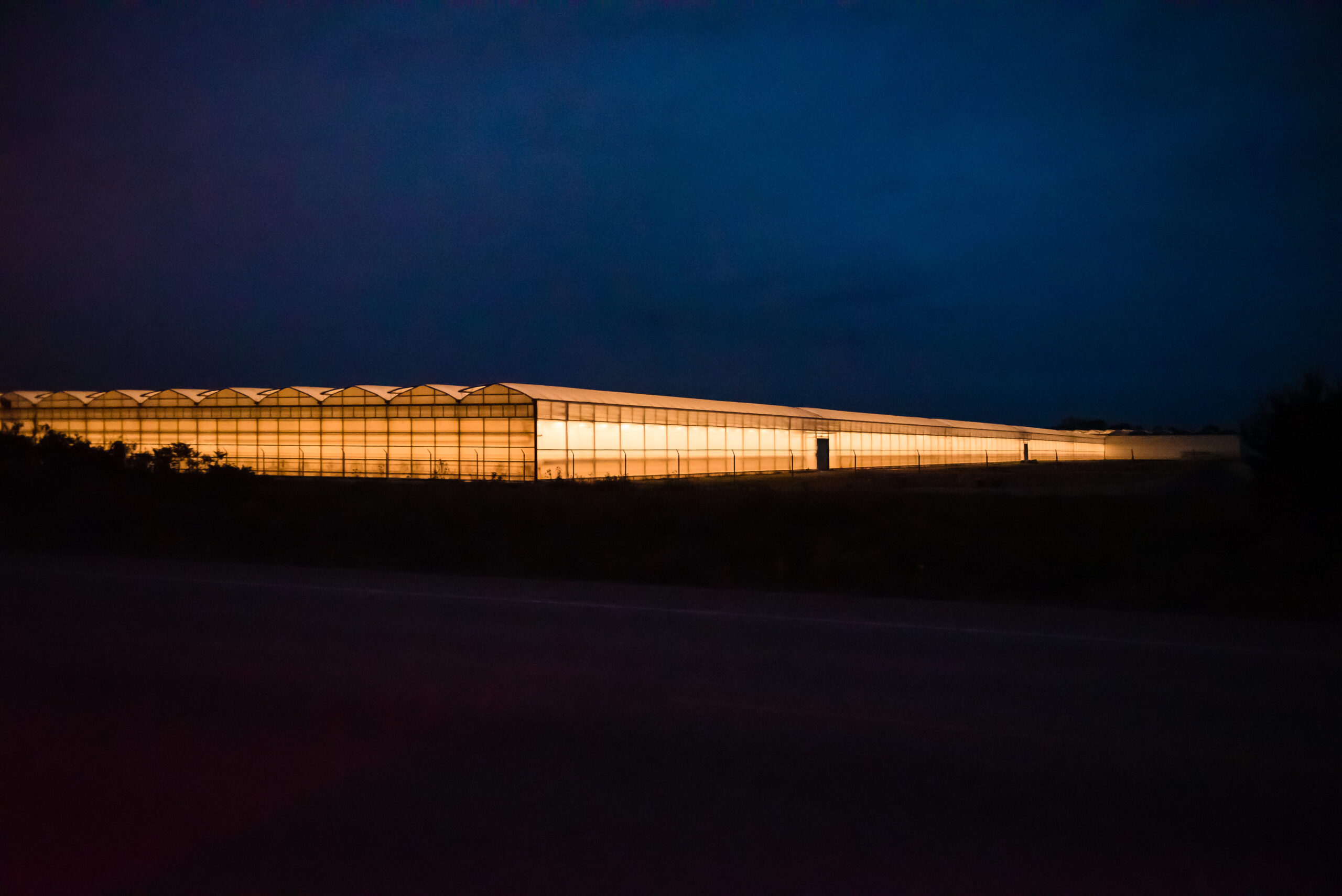
By , The Narwhal
Photography by Kati Panasiuk
This story first ran on The Narwhal, a non-profit news organization that publishes in-depth stories about Canada’s natural world.
For a couple of decades at the end of the last century, it seemed like the blue-green algae problem in Lake Erie had been solved, or at least managed, thanks to a concerted cross-border effort. The most southerly Great Lake garnered a bad environmental reputation throughout the 1960s and 1970s, when the lake, more than four times the size of Prince Edward Island, became covered in large, widespread nuisance algae blooms. The causes were many: phosphorus pollution from phosphate-laden detergents, nutrient-rich soil runoff from farmland and inadequate municipal wastewater facilities.
The problem was particularly bad in the lake’s western basin, where warm, shallow waters encouraged eutrophication, or excessive growth of algae and plants, which blocked sunlight and consumed vast quantities of dissolved oxygen. The resulting damage to aquatic plant and animal populations was so bad the scientific community declared western Lake Erie “dead,” a catastrophe name-dropped in Dr. Seuss’ The Lorax:
“You’re glumping the pond where the Humming-Fish hum!
No more can they hum, for their gills are all gummed!
So I’m sending them off. Oh, their future is dreary.
They’ll walk on their fins and get woefully weary
in search of some water that isn’t so smeary.
I hear things are just as bad up in Lake Erie.”
Like the Lorax, Lake Erie’s story seemed to have a happy ending. Governments on both sides of the Canada-U.S. border and the international research community took action, focussing on phosphorus, the main driver of algae blooms. In 1978, an agreement was made to reduce total phosphorus loading into Lake Erie to 11,000 metric tons annually.
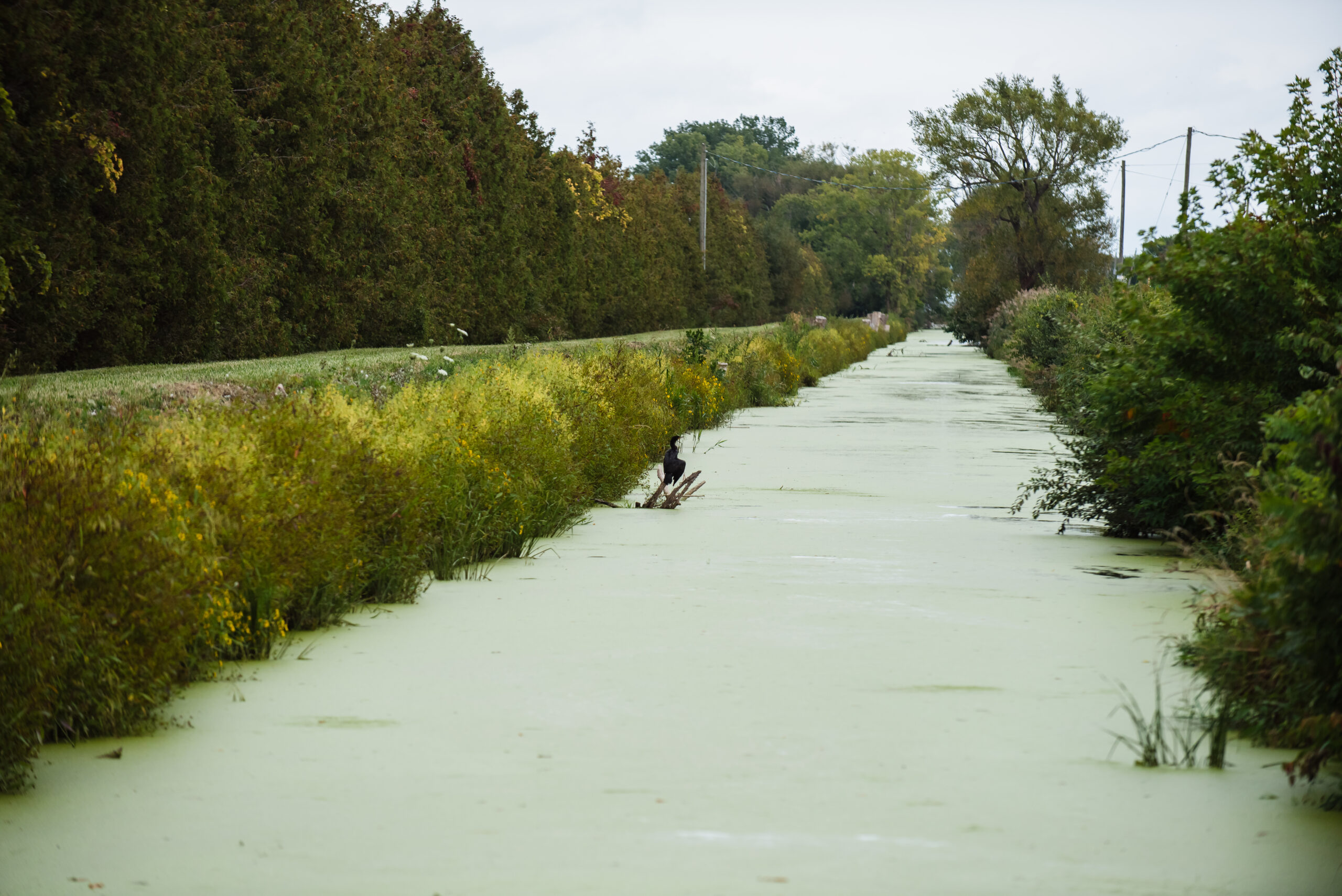
Drainage ditches like this one in Leamington, Ont., are used to divert excess water across Essex County’s flat landscape. It’s one way that nutrient-rich water that can cause algae might be getting into Lake Erie, as experts say vegetable and cannabis greenhouses pose a significant threat. (Photo Credit: Kati Panasiuk/The Narwhal)
In the years that followed, phosphates were removed from detergents. Municipal wastewater infrastructure was improved. In the countryside, farmers adopted production practices, such as no-till and minimum-till crop production, that disturbed soil less frequently, leaving it less vulnerable to wind and water erosion. The cumulative result was a recovering ecosystem, and the smallest Great Lake remained largely free of problem algae blooms for the next couple of decades.
By the early 2000s, however, they returned. Today, algae blooms threaten both the lake’s ecosystem and drinking water in places like Toledo in Ohio, Ontario’s Pelee Island and other shoreline communities. The problem is worse than it used to be: even though the phosphorus limits are still in place, the algae is persistent and more toxic.
The pollution is coming from multiple sources — it’s especially prevalent during big storms and snow melt — making it unclear exactly how nutrient-rich water is getting into local streams. But experts say the explosion of vegetable and cannabis greenhouses in southwestern Ontario poses a particularly significant threat.
According to a 2022 Statistics Canada report, the province is home to more than 60 per cent of the greenhouse area in Canada. Since 2016, the footprint of Ontario’s greenhouses has increased by more than 44 million square feet (or four million square metres), roughly the size of 2,500 hockey rinks. Ontario Greenhouse Vegetable Growers says the industry it represents produces more than 500 million kilograms of vegetables. Statistics Canada also reports that in 2021, three years after the legalization of cannabis in the country, more than one million square metres in the province were dedicated to licensed greenhouse growing.
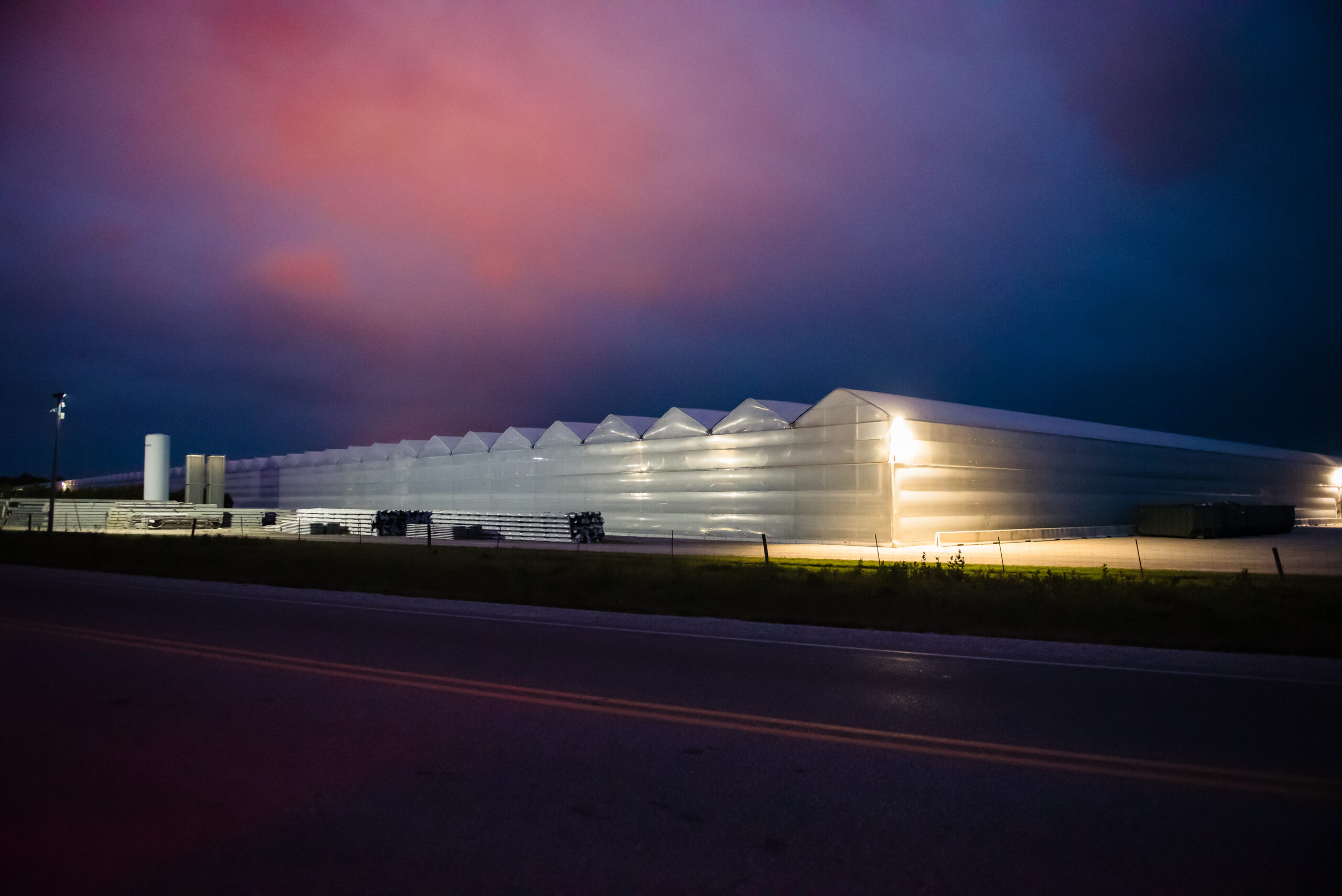
Since 2016, the footprint of Ontario’s greenhouses has increased by more than 44 million square feet (or four million square metres), roughly the size of 2,500 hockey rinks. Leamington Mayor Hilda MacDonald says issues such as excessive light pollution and illegal waste disposal can make the industry’s relationship with local communities adversarial. (Photo Credit: Kati Panasiuk/The Narwhal)
The greenhouse proliferation can have dire consequences for the region if left unchecked, but Mayor Hilda MacDonald of Leamington, Ont., a greenhouse-heavy municipality just southeast of Windsor, says local municipalities have limited resources to investigate if operators are violating existing rules and few means of stopping those who are.
MacDonald doesn’t mince words about her need for more help. She says the lack of action from the provincial government on a well-known and significant environmental problem is inexcusable.
“Don’t tell me it’s just a few bad apples. Those bad apples are big bad apples and they’re ruining the whole bin,” MacDonald says. “We’re holding [the Environment Ministry’s] feet to the fire. They’re the ones who have fallen down on the job. Testing? That’s their job. Where the hell are they?”
As the footprint of the multi-billion-dollar greenhouse vegetable and cannabis sectors in southwestern Ontario’s Windsor Essex region increases, the provincial Ministry of the Environment, Conservation and Parks — the government department that could affect immediate change — remains largely absent. Its public list of fines levied after environmental violations goes back to May 2019: in that time, only a small handful of convictions appear to concern the management of nutrients, stormwater or effluent water in the Windsor Essex region.

Lake Erie’s western basin is most prone to problem algae blooms. It sits adjacent to Point Pelee National Park, an area of preserved Carolinian woodlands and marshland. (Photo Credit: Kati Panasiuk/The Narwhal)
The highest was $62,500 in fines handed out to Kapital Produce in Windsor, Ont., in April 2022 for mixing greenhouse water and stormwater. The ministry’s court bulletin says the levels of phosphorus were up to 40 times higher than the limit of 0.5 milligrams per litre specified in the company’s environmental compliance approval, a permit required to operate.
The ministry site listed just three other convictions in the region since 2019, resulting in a fine of $6,500 handed out to Cielo Vista Farms for not maintaining proper logs of stormwater pond inspections; $31,250 charged to Golden Acres Farms for having over-limit phosphorus levels in a stormwater collection pond that discharges into a drain that leads to Lake Erie; and $50,000 imposed on Nature Fresh Farms for allowing greenhouse water to flow into Leamington’s Bailey Drain. All of the convictions listed on the ministry site were at operations that grow vegetables, not cannabis.
The Ministry of the Environment, Conservation and Parks did not respond to questions from The Narwhal.
Different algae, mysterious sources: nutrient loss from farmland a complex problem
One confusing aspect of the algae’s return is that the 1978 phosphorus limit is still in place. “The loads are still meeting that 11,000 metric tons. We haven’t gone over that,” Katie Stammler, water quality scientist and source water protection project manager with the Essex Region Conservation Authority, tells The Narwhal. “Something obviously changed in the lake itself.”
Climate change and slightly warmer temperatures are likely a factor in the lake’s reversal of fortunes. The impact of invasive species may be another. And from a farming perspective, the move toward practices that reduce erosion had unforeseen impacts. While less soil disturbance means less sediment-bound phosphorus enters waterways directly from farm fields, it also means more water-soluble phosphorus — phosphorus dissolved in water — slips through field drains and drainage tile.

As the Ontario government pushes for fast residential development, one local farmer worries about the increased stress on ecologically important areas such as Point Pelee National Park. The more wetlands lost, the harder it is for the overall ecosystem to function, whether or not individual farms are handling nutrients properly. (Photo Credit: Kati Panasiuk/The Narwhal)
The blooms themselves are also changing. Algae blooms used to be caused by diatoms — a non-toxic type of algae — but are now increasingly caused by toxic microcystis algae. “What we’re finding out now is [microcystis algae is] an opportunistic species globally, anywhere there’s disturbance. … They like the warmer temperatures, they’re rising as diatoms are falling,” Stammler says.
The final analysis, she says, is Lake Erie “can’t handle the amount of phosphorus that we thought that it could, and now we have to give it less.”
“So, we have to evolve the science and say ‘What is the difference now and how much phosphorus can the system take now?’ ” Stammler says. “What is the type of phosphorus it can take?”
As algae reappeared at the turn of the millennium, water quality researchers began noticing additional worrying trends in Essex County waterways with significant greenhouse footprints. First, there was a jump in baseline nutrient loading in waterways such as Sturgeon Creek, which runs through an area with a high concentration of greenhouses.
Essex County’s greenhouse footprint tripled between 2000 and 2020, with significant growth occurring in Leamington, the site of Sturgeon Creek and nearby Lebo Drain. As the years progressed, so did the amount of nutrient pollution. The Environment Ministry investigated, releasing a 2012 report with damning conclusions.
Of 32 outfall locations at different greenhouses, 21 were found to have high levels of nitrates or phosphorus — indicative of nutrient water or process water from greenhouse production getting into municipal streams. Sturgeon Creek was found to have phosphorus concentrations nearing seven milligrams per litre, or a level Stammler calls “gross.” The provincial limit for a healthy waterway is 0.03 milligrams per litre. Nearby Lebo Drain was not much better.
The 2012 report categorized Sturgeon Creek and Lebo Drain as “the most polluted in the province of Ontario with respect to phosphorus and nitrate.” It concluded the ministry could not support further greenhouse development in either watershed “without appropriate treatment technology in place.”

Local officials and conservationists are concerned greenhouses operated by “bad apples” are significantly contributing to Lake Erie’s water woes. They say there’s a lack of action from the provincial government on the issue. (Photo Credit: Kati Panasiuk/The Narwhal)
Yet greenhouse development continued to explode across the region. The number of hectares under glass and plastic has continued to grow since 2020, now spilling into adjoining municipalities.
The nutrient-loading problem, similarly, has only become more acute. An August 2023 report by Stammler and her colleagues at the Essex Region Conservation Authority shows phosphorus loading in Leamington tributaries now ranges from 2.9 to 6.0 milligrams per litre, or 100 to 200 times higher than the provincial target.
With over a decade of collected data, the report found “year over year, nutrient concentrations continue to be strikingly higher in greenhouse streams than non-greenhouse streams.”
“With greenhouse agriculture continuing to expand in this area, and elsewhere in the Great Lakes Basin, it is essential that we take heed of this canary in the coal mine,” the report reads.
Stammler says what’s most concerning is the apparent significant leakage stemming from what should be totally enclosed, state-of-the-art, brand-new greenhouse constructions.
Greenhouse water management is not the Wild West. Regulations around the disposal of effluent water — water used in the production of crops — do exist, at least on paper. Many growers also operate on entirely closed systems, where water and nutrients are continually reused.
Area farmers The Narwhal spoke with were not comfortable going on the record. One was H., a Leamington-area greenhouse vegetable grower who operates the type of closed system meant to keep nutrients out of waterways.
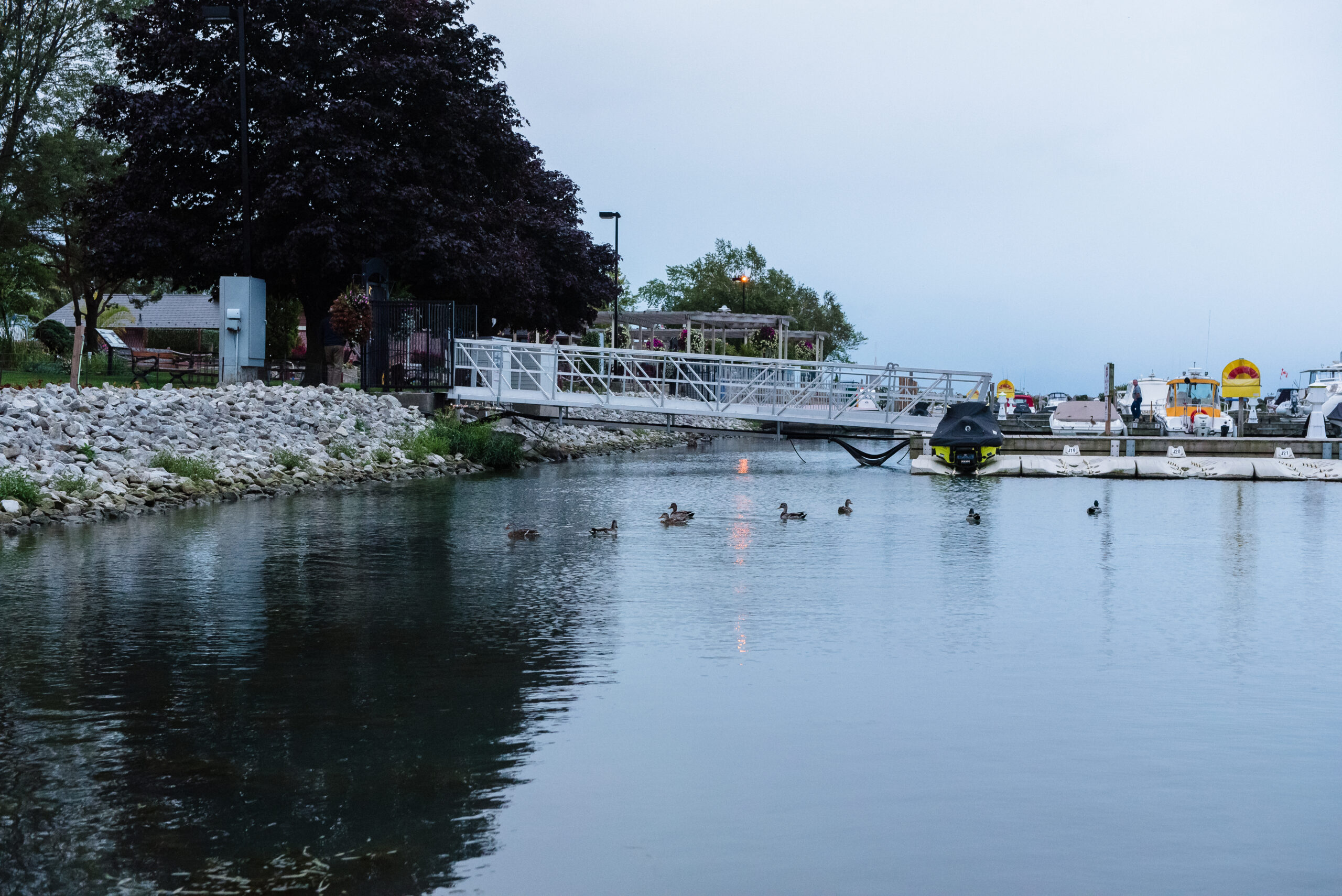
Phosphorus loading in tributaries that feed into western Lake Erie is now 100 to 200 times higher than the provincial target. In recent years, Ontario’s Environment Ministry has imposed only a handful of fines for mismanagement of nutrients, stormwater or effluent water in the Windsor Essex region. (Photo Credit: Kati Panasiuk/The Narwhal)
H. said Ontario’s Environment Ministry requires regular testing of his farm’s water systems, which recycle as much water as possible in order to trap and reuse nutrients. The ministry also inspects his stormwater retention ponds, which collect rainwater from greenhouse roofs. No nutrients from his vegetable production system mix with stormwater.
“We test our ponds monthly and keep that data on hand,” H. says. “We put other stewardship programs in too. We hired someone twice to come in, plug our drains and make sure none of our nutrients are getting into our ponds. … We’re a totally closed system. It’s not like I have a valve I can open.”
H. participated in a University of Windsor research project determining the best way to turn retention ponds from nutrient sources into effective nutrient sinks. The project was supported by Ontario Greenhouse Vegetable Growers, the marketing board representing the greenhouse vegetable industry.
“Ponds can be a sink or a source of nutrients because of all the biological activity that goes on within the pond. Almost the best thing you can do is try to turn the pond into a wetland so you’re dealing with the nutrients on site,” H. says. The idea is to recreate nature’s filtration power by making otherwise vegetation-free stormwater ponds resemble native wetlands. “A lot of times the easiest solutions have already been created by nature. … Instead of clear-cutting 50 acres of cattails, for example, maybe we should just leave them.”
“One of the biggest things we deal with is nitrogen. When you test the ponds, you’ll get different nitrogen levels depending on the depth. Sometimes it even matters the direction of the wind, and how that water is moving in that retention pond,” H. says. “We’re on a good path. But I can’t tell you where the nutrients are coming from because, right now, I don’t know. We’re on a closed system.”
H. wonders if today’s high nutrient levels in Lake Erie are due to less sophisticated practices in years past. “Those ponds, 25 or 30 years ago when they weren’t recirculating nutrients, they probably were dumped in then,” he says.
As the Ontario government pushes for fast residential development across the southern part of the province, H. worries about the stress of increased urbanization adding to the effects of agriculture on ecologically important areas. The more wetlands lost, he says, the harder it is for the overall system to function, whether or not individual farms are handling nutrients properly.
Mayor, researchers and vegetable industry disagree about effect of greenhouses, but agree Ontario needs to act on Lake Erie
H. expresses frustration at the area’s large greenhouse cannabis sector — an industry he believes may be a significant source of pollution, but that flies under the radar while vegetable growers deal with the fallout. Stammler says it’s “a mystery” how large of an effect cannabis greenhouses might be playing on Lake Erie’s algae. “I don’t think they have an overarching body like greenhouse vegetable growers, so my understanding is that it’s kind of the Wild West,” she says.

Lake Erie and its shores are home to a host of uses, from recreation to commercial fishing to agriculture to shipping. (Photo Credit: Kati Panasiuk/The Narwhal)
The Ontario Cannabis Association didn’t respond to The Narwhal’s questions about whether its members discuss the nutrient issue among themselves or with the government, while a spokesperson for the Cannabis Council of Canada replied he wasn’t sure, saying individual growers would have to be consulted. Richard Lee, executive director of Ontario Greenhouse Vegetable Growers, didn’t want to speak for the newly legal crop, writing in an email “cannabis growers will have to speak to their own practices, the greenhouse sector is not monolithic.” Lee added it’s important to distinguish between licensed cannabis operators and those on the “black and grey market,” since non-licensed operators’ “growing practices remain unaudited and there are no oversight bodies governing their day-to-day operations.”
Since Statistics Canada’s data on cannabis greenhouse farms only includes licensed growers, it’s unclear how big the unlicensed industry might be. But Jason Venkiteswaran, an associate professor in the geography and environmental studies department at Wilfrid Laurier University, tells The Narwhal it’s unlikely the growth in Ontario’s cannabis greenhouses since legalization have had a significant effect on Lake Erie’s algae blooms.
“Bloom severity varies from year to year,” Venkiteswaran wrote in an email, but 2023 data from the National Centers for Coastal Ocean Science doesn’t show significantly different algae blooms in 2019, 2020, 2021 or 2023 than in the previous decade. Venkiteswaran, whose work focuses on algae blooms and carbon in small lakes, points out the blooms’ maximum severity is at the mouth of the Maumee and Sandusky rivers, which flow out of highly populated Ohio.
“It’s difficult to see how cannabis greenhouses would be a significant enough source of phosphorus to Lake Erie to change the year to year bloom size and intensity,” he wrote.
Environment Ministry has yet to commit funds for needed sewer line
Mayor MacDonald, who is also the warden of Essex County, believes bad actors are indeed present.
The relationship between the municipality and the area’s greenhouse industries is often adversarial, she says, with a number of significant issues — such as excessive light pollution, infrastructure damage from greenhouse truck and equipment traffic and illegal waste disposal — either going unaddressed or taking forever to make it through the legal process. While municipalities technically approve greenhouses, it’s hard to justify rejecting applications to build them, particularly because greenhouses, regardless of size, are classified the same as bare farmland from a zoning perspective.
Despite his own efforts to ensure his water system is closed, H. says it is possible some greenhouse operators are doing what they can get away with, rather than what they should — especially if the only recourse is a slap on the wrist.
But Lee, of Ontario Greenhouse Vegetable Growers, is more skeptical. “Greenhouse operators live in the community and in the watersheds,” he says in an email. “Every drop of nutrient not fed to a plant is wasted revenue and no reasonable person would willfully release nutrients.”
What Lee and the mayor agree on, though, is that upper levels of government need to help. Leamington has been asking the provincial and federal governments to invest in reducing the risk of nutrient pollution for over a decade. Eight years ago, MacDonald says, Leamington asked for funding for a sewer line to carry effluent water and sewage from an exploding office sector through one of the most greenhouse-heavy areas of the county.
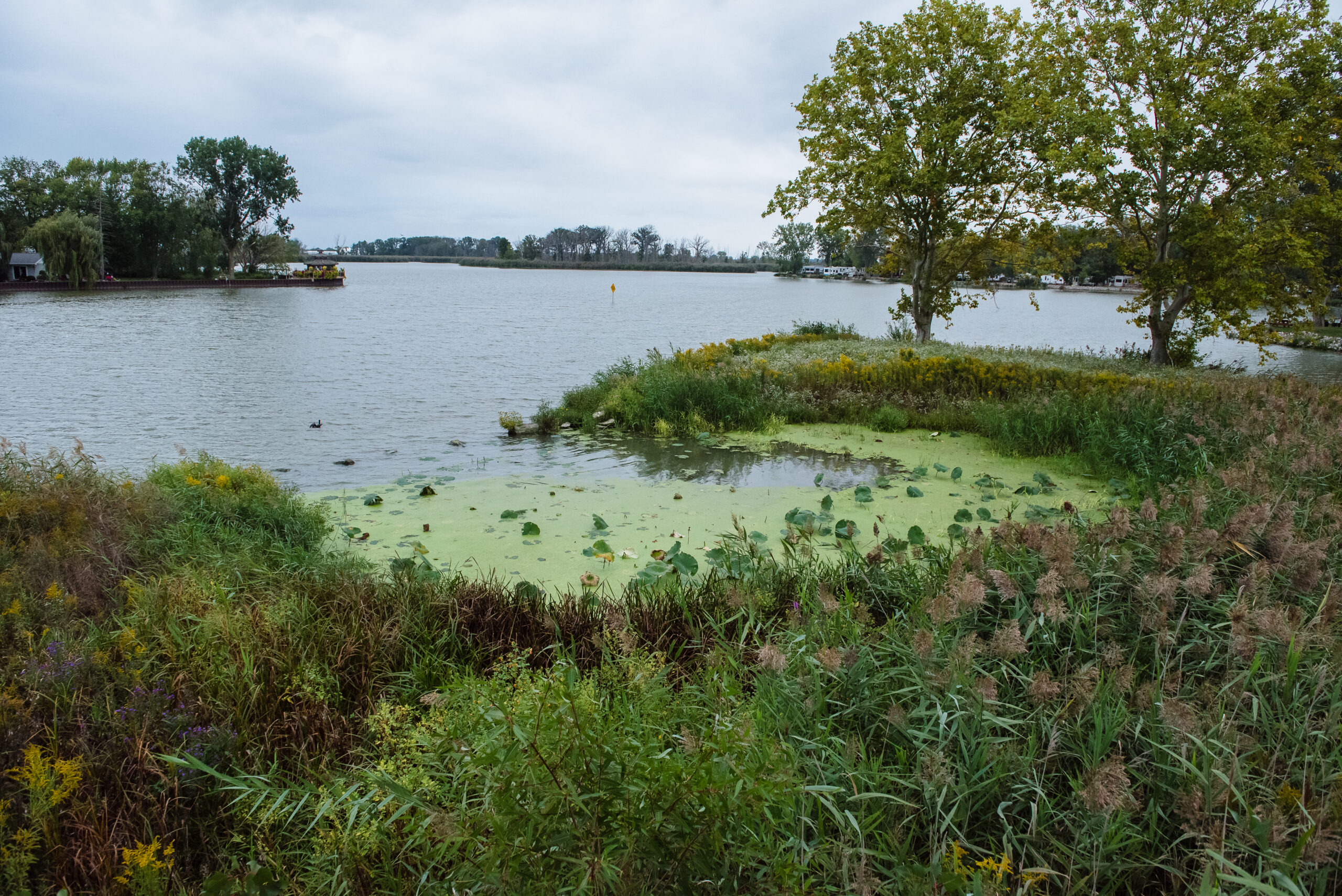
The limits on the amount of phosphorus allowed in the lake hasn’t changed since 1978, leading experts to the conclusion that Lake Erie “can’t handle the amount of phosphorus that we thought that it could, and now we have to give it less.” (Photo Credit: Kati Panasiuk/The Narwhal)
Back then, MacDonald says, the cost estimate was $80 million. Now, it is over $120 million. MacDonald says Leamington can afford to contribute $30 million for a project that benefits one industry, in one area.
MacDonald says despite multiple consultations, the Environment Ministry hasn’t committed any funding for the sewer line. Neither have any other provincial ministries, such as Infrastructure, Agriculture and Municipal Affairs and Housing. Federally, the municipality spoke “on a casual level” with ministries of Environment and Infrastructure.
The Ministry of Agriculture, Food and Rural Affairs and the Ministry of Finance deferred The Narwhal’s questions about the sewer line to the Environment Ministry which, along with the Ministry of Infrastructure, did not respond.
“We hit every ministry we could think of,” MacDonald says, adding the conversations took place during both her administration and that of her predecessor.
Lee said his organization has talked to “the Ministry of Infrastructure, Ministry of Finance and other key ministries to bring awareness for the need for a more robust infrastructure to support agriculture across Ontario, but more specifically in the southwestern region where we have experienced hyper growth in a relatively short time.”
That includes the sewer line, what he calls “one solution to addressing nutrient latent water but comes at a significant cost to the town and rate payer. … We remain in contact with all parties to move the project forward for the benefit of all stakeholders.”
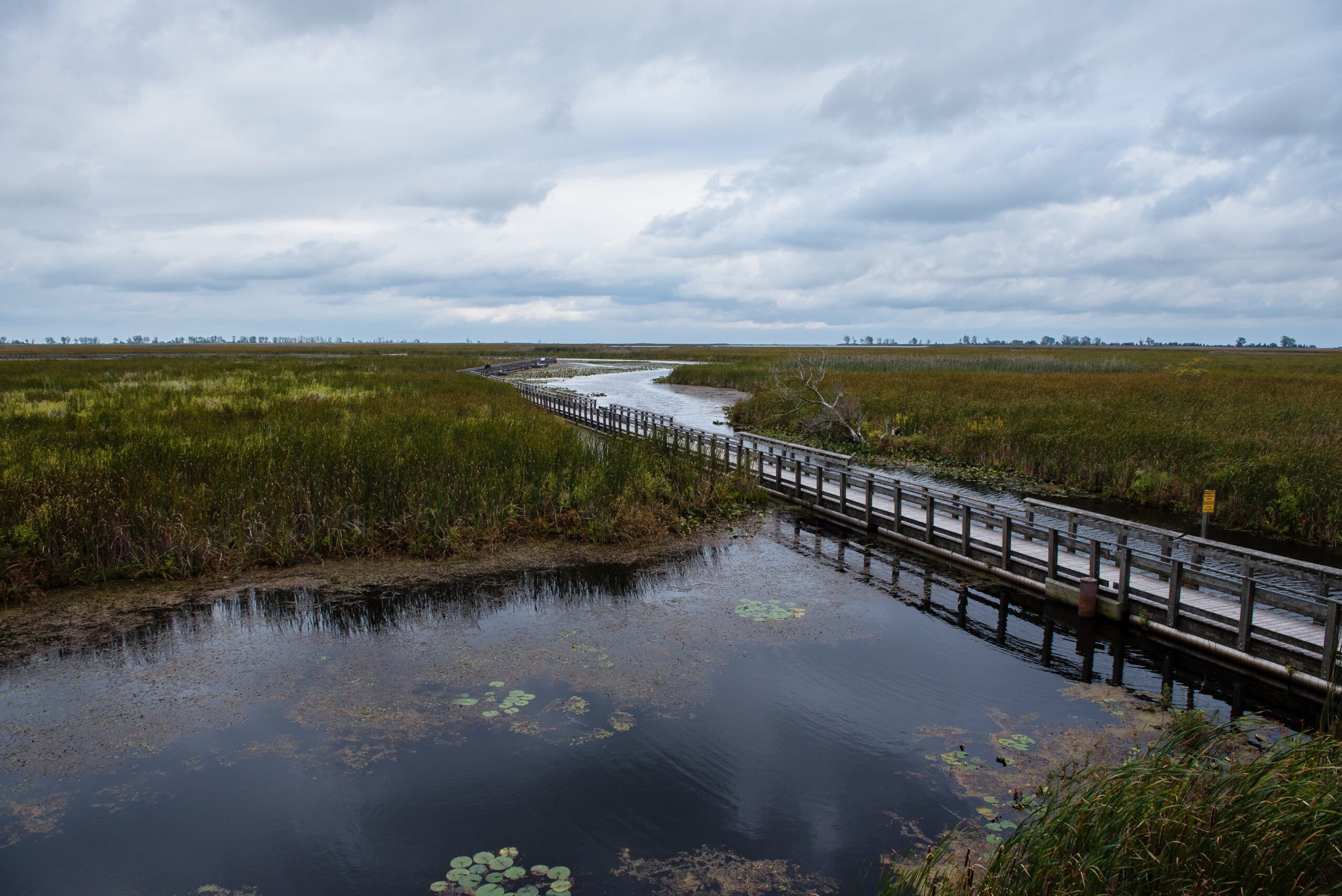
Algae blooms affect the ecology of Lake Erie and all sorts of uses, including recreation at areas like Point Pelee National Park. (Photo Credit: Kati Panasiuk/The Narwhal)
From MacDonald’s perspective, the provincial Environment Ministry should be conducting more regular, randomized water quality tests, as well as infrastructure site checks of greenhouses and site plans. Generally, she wants help to make it more difficult to discreetly release effluent water in an unapproved way.
“Our water intake is in the lake. If that water intake gets shut down, not only will the people not be able to have drinking water, but [greenhouses] won’t either,” she says, which could “shut the industry down. There has to be something done, but we’ve heard nothing but crickets from the upper levels for eight, nine years.”
Stammler agrees, saying the Environment Ministry has the right tools and enforcement capability to home in on polluters — it’s just not using it. Further investigation by the ministry could help narrow down exactly where within a given watershed increases in nutrient concentrations are occurring, and subsequently, who is causing them.
“In my experience, no matter how much evidence there is, people will always try to say it’s not them or it’s not true,” Stammler says. “In this case, we are showing that there is a watershed-scale problem in watersheds where there are greenhouses, and not in similar watersheds without greenhouses. We don’t know how it’s happening, but we know that it is.”
With files from Denise Balkissoon.
Catch more news at Great Lakes Now:
It isn’t arson: untangling climate misinformation around Canada’s raging wildfires
A former GM plant in St. Catharines is leaking toxic chemicals
Featured image: Ontario is home to 60 per cent of Canada’s greenhouse area — many clustered around Lake Erie in Windsor Essex County. The lake has seen increasing algae blooms, despite decades of cross-border efforts to curb the problem. (Photo Credit: Kati Panasiuk/The Narwhal)


